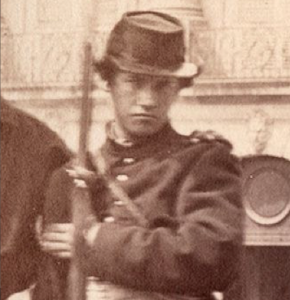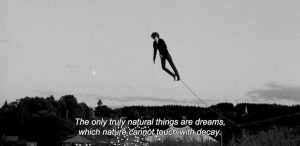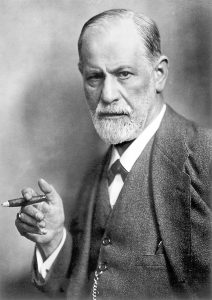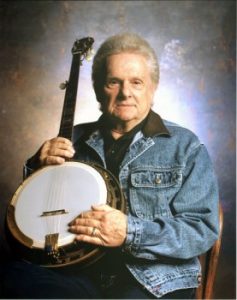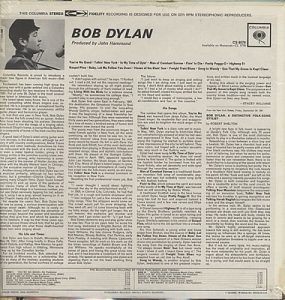By Paul Robert Thomas
I: “Alternatives To College”
I don’t usually respond to other contributors’ articles but John Stokes’ well researched and scholarly essay Dylan And The Sick Rose (Dignity #3) on Dylan’s Every Grain Of Sand prompted me to write on this song. From the beginning I could accept the research that John Stokes had put in and appreciate the connections he was making but I could not accept his assertion that Every Grain Of Sand is not a religious song (in the sense of being biblically inspired or rooted in an orthodox religious tradition).
Rather based on, or inspired by, the work of William Blake, an antinomian ‘Christian’ poet who believed that the Gospels emancipated him from the obligations of the moral law and who effectively created his own mythology and religious belief out of an idiosyncratic reading of The Bible. Where I hope that John Stokes and I would agree is in placing Dylan’s song among his finest artistic achievements. It is a song so beautifully poignant that it can move one to tears, especially in concert performance, and is so perfectly crafted that every line is essential to convey the meaning 1 believe Dylan meant us to share. He has said of this song,
“That was an inspired song that came to me, it wasn’t really too difficult. I felt like I was just putting words down from somewhere else and I just stuck it out”.
Explaining something of what the song meant to him, and at the same time making it clear where he stood in relation to religious beliefs, Dylan said,
“I like to keep my values scripturally straight……… Everything is crooked now and the signs all point you the wrong way – it’s like we’re living at the time of the Tower Of Babel, all our tongues are confused. We’re building a tower to Venus. Where the hell is that? What are we going to find there? God? The Bible says ‘Even a fool when he keeps his mouth shut is counted wise’, but it comes from the Bible, so it can be cast off as being too, quote, “religious”…. To the aspiring songwriter and singer I say disregard all the current stuff forget it, you’re better off; read John Keats, Melville, listen to Robert Johnson and Woody Guthrie.”
Dylan affirms his religious belief and his dependence on The Bible and Blake is not alluded to amongst the ten names of stars, writers and singers he mentions.
Every Grain Of Sand recorded on May 12th, 1981 has been seen by some to mark the end of Dylan’s so called ‘Born Again Christian’ period which is said to have commenced, publicly, with the studio recording of Gotta Serve Somebody on May 1st 1979. But Dylan apparently tried out the song as early as September 23rd, 1980 in his mobile studio (the famous ‘dog accompaniment’ demo tape from this session is in circulation). This places the song seven months after the Saved studio sessions and seven months before the Shot Of Love sessions and, although the song appears in Dylan’s ‘Christian’ period and may be seen as closing the final ‘Christian’ album, ( Shot Of Love ) released August 12th 1981, was the song written as late as it appears?
The Greek-born singer Nana Maskouri told my associate Liz Thompson, in London in 1984: “Bob Dylan wrote Every Grain Of Sand for me, and I recorded it before he did. I met him in Los Angeles in 1975 or 1976 through mutual friends. He didn’t know that I did a lot of his songs in French and German
From this footnote in Robert Shelton’s biography of Dylan it is not clear whether Nana Maskouri is suggesting that Dylan wrote the song at the time of their first meeting, placing it in 75 or 76, or wrote it for her later but it may place the song’s composition even earlier than the dates we have above. It would depend on whether Dylan made his demo before giving the song to Maskouri or after: – MMMM – Has anyone got Nana Maskouri’s recording of Every Grain Of Sand to confirm her recording date?
Every Grain Of Sand closes the album which Dylan has consistently stated is his favourite album – although he always mentions his 1965 album Highway 61 Revisited in the same breath. Is there any connecting thread between Highway 61 and the trilogy of ‘Christian’ albums? I think so; the connection is trains. I’m no train spotter but the liner notes to Highway 61 Revisited begin, “On the slow train time does not interfere…”; trains and Rabbis feature in the films Eat The Document and Renaldo & Clara (although the Rabbi’s isn’t riding the train in the latter, check it out) and right on down the tracks to Slow Train Coming. (Getting sidetracked for a moment, the opening lines to Changing Of The Guards “Sixteen years”, on the album directly preceding Slow Train, remind me that the time between the release of Highway 61 Revisited, ‘with its reference to ‘the slow train’ and the last stop of the train from Slow Train Coming on Shot Of Love is coincidentally, sixteen years!) But to return to my major point, Every Grain Of Sand is neither a dirge nor “the derailment of Dylan’s single track express train of religion” (sic) but a simple song with a simple melody and, as such, akin to the hymn from New Morning – Father Of Night (recorded in August 1970). However, by the time of Every Grain Of Sand Dylan is more willing to ‘stand naked’ before us and unequivocally express his faith in God. Not Blake’s God, nor the God of The Vineyard Fellowship but The One God prayed to twice daily, once during daylight and once at night, (hence “Father of night, Father of day” from the hymn which closes New Morning)’with a declaration of faith in the unity of God which echoes the great central prayer of Judaism called The Shema, found in Deuteronomy 6:4-9. 1 can see the hymn, Every Grain Of Sand, as having very little to do ‘with the thought, faith or poetry of William Blake although, by virtue of John Stokes’ article I understand that the song might provoke associations to Blake’s work such as Auguries Of Innocence and parts of Jerusalem through Dylan’s choice of words. This seems to have misled Shelton and others in to calling Dylan’s song ‘Blakean’ but many of Blake’s most powerful symbols rely on The Bible for their language, however eccentrically Blake used it. To summarize: Every Grain Of Sand is imbued ‘with reverence before God and Faith in God. I believe it is a hymn (not ‘without Christian influences from Dylan’s study of The New Testament) which, primarily, affirms Dylan’s faith in the one God of his ancestors, the God and Father whom Jesus did not claim parity ‘with but rather said “pray to your father in heaven”. In this hymn Dylan refers to the Master’s hand, and takes care to use a capital letter in spelling Master as in ‘Ruler and Master of the Universe’. In the third verse,
"0h the flowers of indulgence and the weeds of yesteryear,
Like criminals they have choked the breath of conscience and good cheer
I believe Dylan could be referring his audience back to the period before July 1966, the time of his ‘crash’, (watch Eat The Document for a preview of what was to come when Dylan says to the camera – to us and to God – “I’m sorry for all I’ve done and I hope to remedy it soon!”) the period when he was undoubtedly out of control and on a collision course ‘with death. The third and fourth lines of this verse,
"The sun beat down upon the steps of time to light the way
To ease the pain of idleness and the memory of decay"
are, I believe, a reference to his post 1966 new found faith in God born from the period of reflection and Bible reading during and after his convalescence at Woodstock (his Born Again Judaism period?). An Anglican priest and Abbott Fr. Gregory has pointed to a similarity in sentiment and structure in the poem His Litany To The Holy Spirit by the metaphysical poet Robert Herrick. I quote from it for those who like to collect possible literary connections and because I appreciate the similarity. The first verse puts us in mind of Dylan’s opening lines.
In the hour of my distress
When temptations me oppress
And' when I my sins confess
Sweet spirit comfort me!
Herrick’s 10th verse has similar sentiments to parts of Dylan’s third and fourth verses. It is reproduced below.
When the tempter me pursu'eth
With the sins of my youth
And half damns me with untruth
Sweet spirit comfort me!
But Dylan’s sources, I believe can more easily be traced to the Wisdom Literature of the TANAKH, the books of Torah and The Prophets, notably Isaiah, whose influence was so strongly present in John Wesley Hardin’ (The initials J W H form an abbreviation of the Tetragammaton, Y a H W e H, the four sacred letters which symbolize the unutterable name of God and which Jews are prohibited from ‘writing or pronouncing in full. I hold that the “ancient footsteps” refer explicitly to Dylan’s Jewish ancestors from Abraham, the father of the Jewish Nation, Moses, the human author of Torah and liberator of his people and so on to Dylan himself who walks in the faith of his forefathers. The penultimate line of Every Grain 0f Sand originally read, “I am hanging in the balance of a perfect finished plan” by which I believe Dylan meant to be understood as hanging in the balance of God’s plan at a time when Dylan was either suffering the pain of separation and divorce from Sara or remembering that time. It depends, of course, on the date of composition. Out of this “deepest need” Dylan breaks through to a re-affirmation of his belief in God and in the faith of his forefathers in much the same way that the author of The Book Of Job does. Dylan’s work, from the beginning to the present is infused with a love and belief in God. Every Grain Of Sand is far from being an exception in any way. What I will explore in the following pages is the depth of Dylan’s biblical knowledge and how he has used it in his compositions in general, the apparent deepening of his awareness and faith in God at specific moments in his life and his exploration of Christianity at a time of crisis before presenting a reading of Every Grain Of Sand. I hope to uncover or suggest that The Book Of Psalms and Dylan’s Judaism have consciously or unconsciously inspired Dylan in this composition. At the same time I will be acknowledging other sources which the song suggests from the Christian New Testament, which have been suggested in correspondence and phone conversations with Fr Gregory, wherever they seem particularly apposite. Of one thing there is no doubt in my mind:-that Bob Dylan remains a sign of contradiction – an apparent non-conformist who demonstrates an unwavering faith in God. A good companion to The Prophets and, Fr Gregory has said, to a certain Jew born in Bethlehem, the son of David, the son of Abraham.
II: “In The Beginning”
“I follow God, so if my followers are following me, indirectly they’re gonna be following God too because I don’t sing any song which hasn’t been given to me by the Lord to sing”. Bob Dylan. New York l979. 3
John Herdman, in his book A Voice Without Restraint (Pub: Paul Harris 1982) sees Dylan as being “in the most general sense a religious artist” and notes how from “(his) childhood onwards Dylan immersed himself in American popular culture and music”. He adds “The music of rural and urban America, both poor white and black, is, in its turn steeped in Christian mythology of a fundamentalist cast and this could scarcely have failed to impress itself deeply on his consciousness” (p84). Earlier, on the same page he notes how Jews were very much in a minority in his home town, (a fact that Dylan has attested in saying that the town didn’t even have a Rabbi) so much so that when Dylan’s father died in 1968, he was buried in Duluth, the nearest Jewish cemetery to Hibbing. Nevertheless Dylan received formal instruction from a Rabbi (who just appeared) prior to his Bar Mitzvah. At other times he has been linked with the Lubavitchers, a Jewish group dedicated to bringing errant Jews back to their religion and who run a drug re-hab program, considered staying on a Kibbutz, prayed at the wailing wall and had at least one of his sons make Bar Mitzvah. Yet he has also declared that he has had a personal experience with Jesus Christ, made three explicitly Christian albums and declared that Jesus is Lord.
I believe that Every Grain Of Sand is the result of a fusion, by Dylan, of his knowledge and belief in both the Jewish T A NA K H and the Christian Bible – The New Testament and its reading of Jewish scripture, designated The Old Testament. In particular this song demonstrates his familiarity with the books Genesis and Psalms, and, from The New Testament, the four gospels and the doctrines the apostles Paul, John, and the author of The Book Of Revelation. If Nana Mouskouri’s comments place Every Grain Of Sand in as early a period as 1975 or 76 then it dates the song around the time of Blood On The Tracks and Desire. Furthermore, a bridge between the albums Desire and Street Legal might be the song Seven Days*, copyrighted in 1976, which is full of apocalyptic images probably inspired by The Book Of Revelation. What I am suggesting is that Dylan went through a much longer period of reflection and self-examination before the public revelation of his newly held beliefs. Four years is a reasonable time to consider conversion to another religion, I myself took three years of questioning before ‘taking the plunge’ into new waters of belief- but no, I didn’t become a Baptist. If an earlier date than 1980 can be proved for the composition of Every Grain Of Sand it suggests a much earlier date for Dylan’s religious maturity; (for if the song marks anything it marks that). To me it feels more like a song which might have been composed around the time of Street Legal circa 1978. But I’m only guessing.
Dylan’s first intimations of a definite turn towards Christianity (he had always used its imagery and shown a fascination with the person Jesus) might be discerned in the lyrics of Abandoned Love recorded in July 1975 but left off Desire. A more emphatic reference occurs in Idiot Wind (1974) – the “lone soldier on the cross” who “won the war after losing every battle” is a neat summary of the ministry, crucifixion and resurrection of Jesus. On Street Legal the intensity of a spiritual battle is captured in Journey Through Dark Heat (Where Are You Tonight?) which can be heard as a song addressed to Sara and God and which indicates that Dylan felt that he had arrived at some point of revelation reached by that ‘long-distance train pulling through the rain” (all the way from ‘Highway 61’). But even as Dylan sings “There’s a new day at dawn and I’ve finally arrived” and conjurs up images of 1966 with his amazement at being alive, he mourns the cost, “But without you it doesn’t seem right”. (Is there some indication here of a spiritual difference between Dylan and Sara which resurfaces in the bitter recriminations on Precious Angel? – “You were telling him about Buddha, you were telling him about Mohammed in one breath/You never once mentioned the man who came and died a criminal’s death.” Returning to Journey Through Dark Heat the image evoked by the verse “I fought with my twin the enemy within” might be likened to Jacob wrestling with the angel (some translators render the word angel ‘man’) and Jesus ‘wrestling’ with temptation (or Satan as Christian doctrine personifies it) in the wilderness. Both Jacob and Jesus emerge from their trial with God’s blessing and a conviction of their vocation. Is this the ‘message’ of Journey Through Dark Heat? If so then I would suggest that Dylan’s ‘vocation’ is fully realized in Every Grain Of Sand and affirmed to his audience – “Love the Lord your God with all your heart, and all your soul, and all your might”. (from The Shema).
Bob Dylan has never renounced his belief in Christ but he has questioned and deepened his understanding of it and, in the process, has become disillusioned with Establishment Religion – “God isn’t in a synagogue with six pointed Egyptian stars shining down from every window” (Minneapolis 1983) and “Religion is another form of bondage which man invents to get himself to God. But that’s why Christ came. Christ didn’t preach religion. He preached the Truth, the Way and the Life”. (Santa Monica 1979). He has, as always, shrugged off any attempt to define or label him or his faith “Whatever label is put on you, the purpose is to limit your accessibility to people. There had been so many labels laid on me in the past it didn’t matter any more at that point. (‘his Christian period’) What more could they say?” (New York I 985). “I’ve never been Fundamentalist. I’ve never been born-again. Those are labels that people hang on you ….. they don’t mean anything at all. 5 (Budapest 1991). As Jesus asked, “Who do people say I am?” so Dylan constantly provokes us to define him only for us to discover that we are defining some part of ourselves. Yet it remains clear from his work that he is deeply concerned with the spiritual health of a ‘World Gone Wrong’ languishing in a “New Dark Age”, where power and greed and corruptible seed seem to be all that there is”. Greil Marcus writing of Blind Willie McTell suggests that Dylan echoes more than a phrase or two from the book Ecclesiastes with its constant refrain “Vanity of Vanities all is Vanity”. To ask of Dylan’s ‘faith’ “Is this where it is” without paying attention to his work is to be met with silence or denial. As a Jew he re-presents the story of his people which is the story of God’s relationship with his creation. As a believer in Christ he points to an end to formal religion and goes as far as to suggest that Christ came to put truth into the hands of ordinary people rather than an elite of priests and pastors. Never forgiven by some for embracing what was seen as a conservative and reactionary belief system, Dylan nevertheless remains an outsider who, as Allen Ginsberg has said, has only sold out to God. It doesn’t surprise or bother me that Dylan should have found fresh inspiration in the Christian New Testament; a friend of mine who has studied both Judaism and Protestant and Catholic Christianity has said that he could see the New Testament as a ‘ midrash’ (an exposition or commentary breathing new life into the books of the Old Testament) and suggests that Dylan could not have lived as a Christian for long without experiencing the Faith he was born into more deeply. As for the Gospels, the writings of Paul and the Revelation of St. John could not exist without constant reference and affirmation of the books of Torah and The Prophets and The Book Of Psalms. I can accept this. It is to the Psalms that I will turn shortly to attempt my own midrash of Dylan’s Every Grain Of Sand and I hope that I may first of all give a brief history of these great ‘Hymns Of Praise’.
King David, whom tradition holds as author of all or most of the Psalms, (some are attributed to Adam, Shem, Abraham and Moses although it is generally accepted that King David collected them together adding many of his own to make up the book we now have in The Bible) continued the tradition of Torah which had been held by his predecessor, the prophet Samuel. He surrounded himself with a group of scholars and was attentive to the teachings of the prophets, and together they would discuss the practical and mystical aspects of Torah. Unlike other Kings he would rise with the sun to pray and chant hymns of praise to the One God, King of the Universe, King of Kings. Many of these inspired hymns became written down and are preserved in The Psalms. They are a remarkable collection of ‘songs’ which cover every aspect of human experience from profound melancholy (“I am a worm and no man” [Ps.22]) to spiritual desolation, “You have laid me in the depths of the tomb/in places that are dark, in the depths”, and unbridled praise and adoration (Ps 94, 99, 66, and 150). But the thread that runs through them is one of unwavering faith in a merciful and loving God. “Let the sons of Israel say His Love endures for ever” (Ps 117). The Book of Psalms is divided into 5 parts parallel to the 5 books of Moses. They are further sub-divided into 7 parts, one for each day of the week, and further divisions provide a portion for reading for the thirty days of the month (Jewish Calendar). The Psalms have provided comfort, wisdom and inspiration to Jews throughout their long and troubled history and inspire confidence and courage in the face of adversity, as the Jew fervently trusts God to hear and respond to his prayers. Paul Williams writes:
“The love in Every Grain Of Sand, though firmly rooted in Dylan’s conversion experience and his Woodstock and his Bible Studies, immediately and obviously reaches beyond its context to communicate a deeply felt devotional spirit based on universal experiences; pain of self-awareness, and sense of wonder or awe at the beauty of the natural world. The key to the performance is its motion; it moves like the sea, forth and back, forth and back, filled with a quality of restfulness but never resting. The song is about the moment(s) in which we accept our pain and vulnerability and bow down before (and are lifted up by) the will of God. Bert Cartwright says, “In Every Grain Of Sand Dylan expresses the solace of God’s caring presence in the face of life’s treacheries and sorrows….”. The song is intensely personal, for listener and singer both; the intimacy of confession, the honest sharing of a sense of sinfulness and despair, creates a possibility of genuine reassurance. Every Grain Of Sand cuts through doctrine and proselytizing and speaks directly to the listeners need”. 6
I believe that all that Paul Williams finds in the song could also be attributed to Dylan’s reaching back, through his upbringing and heritage and forward, through his spiritual maturity, dependent not on his conversion alone but through his Bible reading during his convalescence at Woodstock in ’66 and through his familiarity with the Psalms which is God’s gift to every believer. I hope to show this gift bearing fruit as I now turn to a line by line interpretation of Dylan’s song through the biblical sources it suggests to me.
The article continues…
Untold Dylan: who we are what we do
Untold Dylan is written by people who want to write for Untold Dylan. It is simply a forum for those interested in the work of the most famous, influential and recognised popular musician and poet of our era, to read about, listen to and express their thoughts on, his lyrics and music.
We welcome articles, contributions and ideas from all our readers. Sadly no one gets paid, but if you are published here, your work will be read by a fairly large number of people across the world, ranging from fans to academics who teach English literature. If you have an idea, or a finished piece send it as a Word file to Tony@schools.co.uk with a subject line saying that it is for publication on Untold Dylan.
We also have a very lively discussion group “Untold Dylan” on Facebook with approaching 6000 active members. Just type the phrase “Untold Dylan” in, on your Facebook page or follow this link
You’ll find some notes about our latest posts arranged by themes and subjects on the home page of this site. You can also see details of our main sections on this site at the top of this page under the picture. Not every index is complete but I do my best.
But what is complete is our index to all the 604 Dylan compositions and co-compositions that we have found, on the A to Z page. I’m proud of that; no one else has found that many songs with that much information. Elsewhere the songs are indexed by theme and by the date of composition. See for example Bob Dylan year by year.



